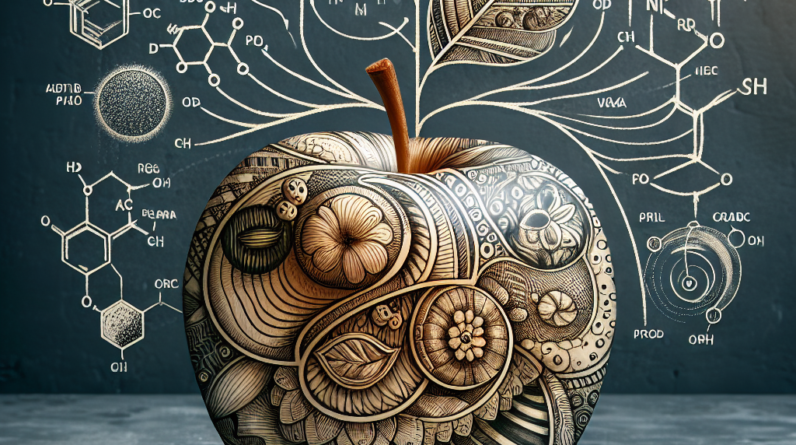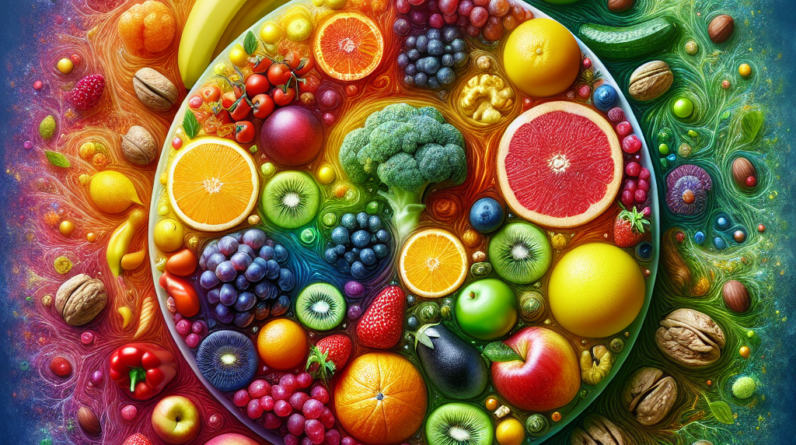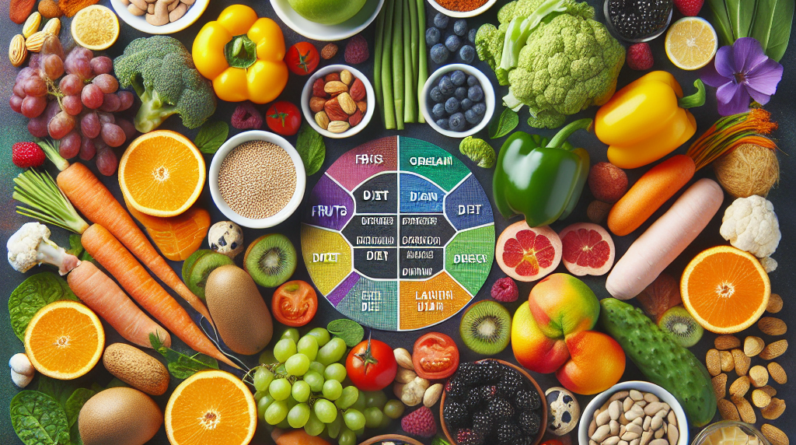
Are you curious about the theory of nutrition and how it relates to aging and anti-aging? In this article, we’ll explore the fascinating connection between eating a healthy diet and gracefully embracing the process of growing old. Discover the secrets to aging gracefully and learn how nutrition plays a significant role in this journey. So, what exactly is the theory of nutrition? Let’s delve into this intriguing topic and uncover the answers together.
Introduction
The theory of nutrition refers to the study of how food affects our overall health and well-being. It encompasses the understanding of the various nutrients present in our diet, their functions in the body, and how they contribute to our overall health. Nutrition is a field that is constantly evolving, with new research and discoveries being made all the time. Understanding the theory of nutrition is crucial for maintaining a healthy lifestyle and making informed choices about the foods we consume.
Importance of understanding the theory of nutrition
Understanding the theory of nutrition is of utmost importance because our diet plays a significant role in our overall health and well-being. The food we eat provides us with the necessary nutrients our body needs to function properly. By understanding the theory of nutrition, we can make informed choices about the types and amounts of foods we consume, ensuring that we meet our nutritional needs.
A balanced diet is essential to provide our body with all the macronutrients and micronutrients it requires. Macronutrients, including carbohydrates, proteins, and fats, provide the energy needed for our everyday activities. Micronutrients, such as vitamins and minerals, play a crucial role in supporting various bodily functions. By understanding the theory of nutrition, we can ensure that we include all these nutrients in our diet, promoting optimal health.

Macronutrients
Macronutrients are a crucial part of our diet as they provide the body with the energy it needs to carry out daily activities. They are divided into three main categories: carbohydrates, proteins, and fats.
Carbohydrates
Carbohydrates are the body’s primary source of energy. They are found in foods such as grains, fruits, vegetables, and legumes. Carbohydrates are further classified into simple carbohydrates and complex carbohydrates. Simple carbohydrates, found in foods like sugar and sweets, provide quick energy but lack nutritional value. On the other hand, complex carbohydrates, found in whole grains and starchy vegetables, provide steady energy and are also rich in essential nutrients and fiber.
Proteins
Proteins are essential for the growth, repair, and maintenance of body tissues. They are composed of amino acids, which are the building blocks of protein. Good sources of protein include meat, poultry, fish, legumes, dairy products, and soy products. It is important to include a variety of protein sources in our diet to ensure we obtain all the essential amino acids our body needs.
Fats
Contrary to popular belief, fats are an essential part of a healthy diet. They provide energy, help absorb fat-soluble vitamins, and contribute to brain function. However, it is important to differentiate between healthy fats and unhealthy fats. Healthy fats, such as those found in avocados, nuts, seeds, and fatty fish, are beneficial for our health. Unhealthy fats, such as trans fats and saturated fats found in processed foods and fatty meats, should be limited to maintain a healthy diet.
Micronutrients
In addition to macronutrients, our body requires smaller amounts of micronutrients, which include vitamins and minerals. While they are needed in smaller quantities, their role in our overall health should not be overlooked.
Vitamins
Vitamins are organic compounds that are necessary for the proper functioning of our body. They play a vital role in various bodily processes, such as metabolism, immune function, and cell production. There are 13 essential vitamins, each with its own specific functions and food sources. It is important to maintain a varied and balanced diet to ensure an adequate intake of vitamins.
Minerals
Minerals are inorganic substances that are also essential for our body to function properly. They are involved in processes such as bone health, nerve transmission, and maintaining fluid balance. Common minerals include calcium, iron, zinc, and potassium. By including a variety of foods in our diet, we can ensure we obtain all the necessary minerals our body needs.

Digestion and Absorption
Digestion and absorption are key processes in the breakdown and utilization of the nutrients we consume.
Digestive process
The digestive process begins in the mouth, where food is broken down into smaller particles by chewing and mixed with saliva. It then travels down the esophagus into the stomach, where it is further broken down by stomach acid and enzymes. The partially digested food then moves into the small intestine, where nutrients are absorbed into the bloodstream.
Absorption of nutrients
In the small intestine, the nutrients from our food are absorbed into the bloodstream and transported to various parts of the body. Carbohydrates are broken down into glucose, proteins into amino acids, and fats into fatty acids and glycerol. These nutrients are then utilized by our cells for energy, growth, and repair.
Metabolism
Metabolism refers to the chemical processes that occur within our body to maintain life. It is a combination of anabolic reactions (building up of molecules) and catabolic reactions (breaking down of molecules).
Basal Metabolic Rate
Basal metabolic rate (BMR) is the amount of energy our body needs at rest to carry out basic functions such as breathing, circulating blood, and maintaining body temperature. It varies depending on factors such as age, gender, weight, and muscle mass. Understanding our BMR can help us determine our daily calorie needs and manage our weight effectively.
Energy Expenditure
Energy expenditure refers to the amount of energy we use in physical activity, as well as the energy needed for digestion and absorption of food. It is important to strike a balance between the calories we consume and the calories we expend to maintain a healthy weight and ensure optimal energy levels.
Metabolic Reactions
Metabolic reactions involve the processing and utilization of the nutrients we consume. These reactions occur in various organs, such as the liver, where carbohydrates, proteins, and fats are metabolized to produce energy and other essential compounds needed for bodily functions.
Food Groups
Food groups are categories that classify foods based on their nutrient content and provide a guide for healthy eating.
Grains
Grains, such as rice, wheat, oats, and barley, provide carbohydrates, fiber, and important vitamins and minerals. Choosing whole grains over refined grains is recommended, as whole grains retain their nutrient content and fiber.
Fruits and vegetables
Fruits and vegetables are rich in vitamins, minerals, fiber, and antioxidants. They provide essential nutrients while being low in calories. Including a variety of fruits and vegetables in our diet helps ensure we obtain a wide range of nutrients.
Dairy
Dairy products, such as milk, cheese, and yogurt, are a good source of calcium, protein, and other essential nutrients. However, it is important to choose low-fat or non-fat options to limit saturated fats.
Meat and alternatives
Protein-rich foods such as meat, poultry, fish, eggs, legumes, and soy products fall under this category. It is recommended to choose lean sources of protein and limit the consumption of processed meats.
Fats and oils
Fats and oils provide essential fatty acids and fat-soluble vitamins. Choosing healthy fats, such as those from nuts, seeds, avocados, and olive oil, is important for a balanced diet. Limiting consumption of unhealthy fats, such as trans fats and saturated fats, is crucial for overall health.
The Energy Balance Equation
The energy balance equation is a concept that relates to the calories we consume versus the calories we expend.
Calories in vs calories out
Calories in refers to the energy from the food and beverages we consume, while calories out refers to the energy our body uses for basic functions and physical activity. To maintain weight, calories in should be equal to calories out. Consuming more calories than we expend leads to weight gain, while consuming fewer calories than we expend results in weight loss.
Energy surplus and deficit
An energy surplus occurs when we consume more calories than we expend. The excess energy is stored as fat, leading to weight gain. On the other hand, an energy deficit occurs when we expend more calories than we consume. This deficit is made up by utilizing stored fat, resulting in weight loss.
Nutritional Requirements
Nutritional requirements vary depending on factors such as age, gender, activity level, and overall health.
Recommended daily allowances
Recommended daily allowances (RDAs) are guidelines that provide an estimate of the nutrient needs for an average healthy individual. RDAs vary depending on age, gender, and life stage. They serve as a useful reference point when planning a balanced diet.
Age-specific and gender-specific requirements
The nutritional needs of individuals differ during different life stages. Pregnant women, for example, have increased requirements for certain nutrients. Similarly, children and teenagers may have higher energy and nutrient needs due to growth and development. Understanding age-specific and gender-specific requirements helps ensure adequate nutrition for each individual.
Special dietary needs
Certain individuals may have special dietary needs due to medical conditions, food allergies, or cultural and religious beliefs. In such cases, understanding the theory of nutrition becomes even more important. Consulting with a registered dietitian or healthcare professional can help tailor a diet plan that meets these specific needs.
Nutrition and Health
Understanding the theory of nutrition can have a profound impact on our health and well-being.
Maintaining a healthy weight
By understanding the theory of nutrition, we can make informed choices that contribute to maintaining a healthy weight. Balancing calorie intake and expenditure, choosing nutrient-rich foods, and practicing portion control are key to achieving and maintaining a healthy weight.
Preventing chronic diseases
A well-rounded, nutrient-dense diet is essential for preventing chronic diseases such as heart disease, diabetes, and certain cancers. By understanding the theory of nutrition and making healthy food choices, we can reduce our risk of developing these conditions.
Boosting immune system
Certain nutrients, such as vitamins A, C, E, and zinc, play a crucial role in supporting a healthy immune system. By incorporating foods rich in these nutrients into our diet, we can strengthen our immune system and reduce the risk of infections and illnesses.
Promoting brain health
Nutrition also plays a vital role in brain health and cognitive function. Omega-3 fatty acids, found in fatty fish, walnuts, and flaxseeds, have been linked to improved brain health. Additionally, consuming a variety of fruits, vegetables, whole grains, and lean proteins provides the necessary nutrients for optimal brain function.
Conclusion
Understanding the theory of nutrition is essential for maintaining a healthy lifestyle and making informed choices about our diet. By knowing the different macronutrients and micronutrients, understanding the digestive and absorption processes, and being aware of our metabolic rate and energy balance, we can effectively meet our nutritional needs. Furthermore, understanding the various food groups, nutritional requirements, and the impact of nutrition on our health empowers us to make positive changes to our eating habits. By implementing healthy eating habits, we can promote overall well-being and achieve optimal health.







